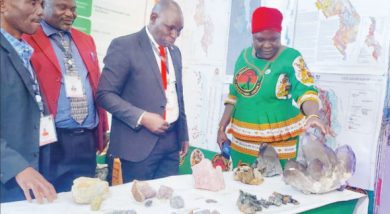Malawi, others make strides towards digital transformation
The World Bank says Malawi and her counterparts in the Sub-Saharan Africa (SSA) region have made strides towards digital transformation, with millions of people now having access to the Internet.
In its analysis of digital development published on Thursday, the Bretton Woods institution said since 2014, about 4.3 million people in Malawi have benefitted from increased access to affordable, high-quality Internet services by productively utilising a wide variety of digital services such as mobile payments and online learning platforms.
Reads the bank’s analysis: “The availability and use of digital technologies are strongly linked to economic growth, innovation, job creation and inclusion at both the national and regional levels.

“Sub-Saharan Africa, however, still faces significant challenges in digital development.”
Among others, the bank said the challenges include underdeveloped digital infrastructure, lack of accessible and affordable connectivity, a stubborn digital gender gap, limited skills for digitally enabled industries and inadequate regulatory and policy environments.
World Bank data further shows that the region’s digital infrastructure coverage, access and quality still lags behind other regions.
The data showed that while 84 percent of people in Sub-Saharan Africa lived in areas where 3G service was available at the end of 2022, 63 percent had access to 4G mobile coverage while only 22 percent were using mobile Internet services.
Affordability of mobile connectivity, measured by the price of one gigabyte of mobile data, is another major constraint, according to the bank.
In 2019, the average cost of one gigabyte of mobile Internet as a percentage of monthly per capita gross national income was 10.5 percent, which is higher than the two percent target recommended by the United Nations Broadband Commission.
Malawi rolled out the 2021/26 Malawi Digital Economy Strategy, alongside the Malawi 2063 (MW2063), the country’s long-term development strategy, to increase device ownership to 90 percent by 2023 through lowering costs associated with mobile phone purchases.
However, two years on, the proportion of people with access to basic digital gadgets such as mobile phones has been stagnant with the 2023 Malawi Government Annual Economic Report figures showing that the number of people using and having access to mobile phones has remained minimal at about 60 percent of the population.
Minister of Information and Digitisation Moses Kunkuyu in an earlier interview said Malawi is fast becoming a digital economy, characterised by the worldwide network of economic activities, commercial transactions and professional interactions that are enabled by information and communications technology.
He, however, said there is high cost of deploying digital infrastructure and lack of digital skills in public service, adding that “Malawi needs digital government legal and regulatory frameworks to accommodate the fourth industrial revolution”.





